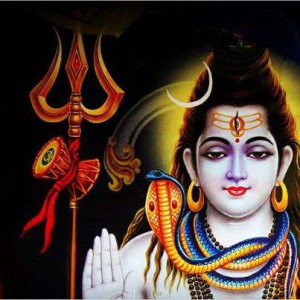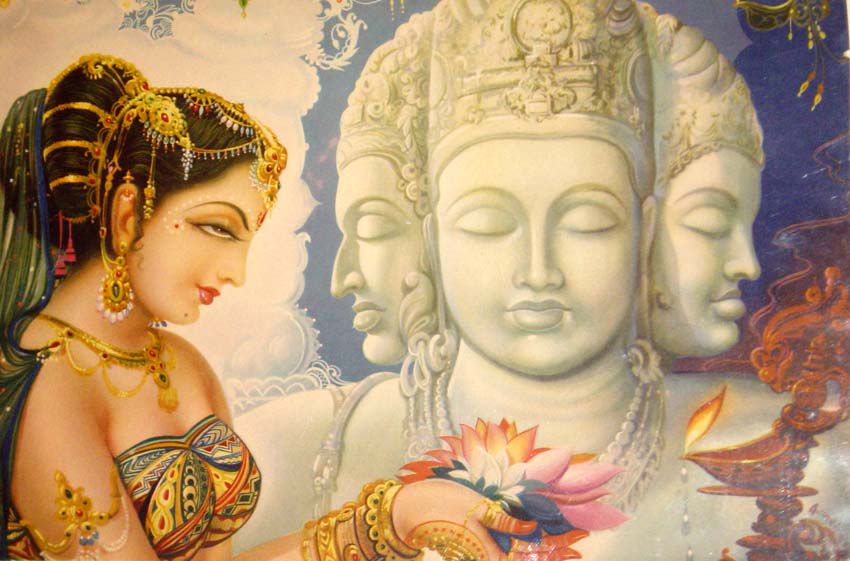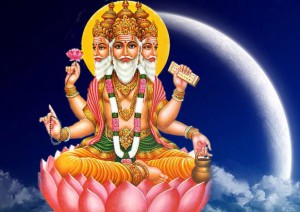No products in the cart.
The most revered values of Hinduism weren’t just the first of all religious findings but also had an impeccable way of reaching the remote of people. Yes, the religious teachings originated from the Vedas in Sanskrit, pretty much legible only to the educated and higher classes of the society or the only Sanskrit speaking cult in a different perspective. But let me unfurl an interesting theory through layers of a passionate set of writers, who took it upon themselves to decode these scriptures into different languages and unique narrations so they can reach even the amateur of men in spiritual pursuit. Thus, came into existence the famous Hindu mythologies, the Ramayana and Mahabharata, the fables, the folk lore and the exquisite writings. Since the Vedas were not in the written form originally, these mythologies became the face of all Hindu learning.
Coming to the part where it is articulated as interesting, why wouldn’t any one love the candy coated moral stories? Remember the Jataka tales, the Panchatantra, the Chandamama kathalu, the classic saga of Vikramaditya or any of the famous regional mythologies that crossed all societal borders bearing the Hindu wisdom on the shoulders of little mermaids, invisible ghosts and giant ogres.
The mythologies started off with outlining the different deities, their magnitude and other primal terms of the glossary. Just like how our familiar calendar is counted after the many roman gods and demi gods, Hindus too cited three gods or the Trimurti namely Brahma, Vishnu and Shiva to keep track of the Universe’s calendar.
Brahma – The Creator
Brahma, the creator of the universe is depicted as the four headed god, literally overseeing the whole world. Unlike the others, he does not carry weapons. The lotus in one of his hands symbolizes essence of all living beings on earth, while string of beads or the rudraskamala in the other serves to keep track of the universe’s time. The count of all the beads on the string equals one cycle of the universe. So here’s the math if you want to set the watch accordingly. One cycle of the universe equals 100 god years which are 311 trillion and 40 billion years on earth.
The creation of the universe is an interesting narrative enacted by Brahma. It is believed that In order to create the human race he crafted a goddess out of himself named Gayatri more eminently known as Saraswati. Humiliated by this odd episode, when Saraswati tried to hide herself Brahma grew the extra pairs of head to look for her. He initially developed five heads but lost one when Lord Shiva cut off one of his head in anger for accepting Paada Pooja from Parvati Devi, who performed the Paada Puja mistaking Brahma for Shiva. This incident is referred to as Brahma Kapalam.
The four Vedas are said to have sprung from his heads. Brahma also created the seers popular in most scriptures Marici, Angiras, Vashishta, Bhrgu and Narada, who referred to as his intellectual sons, while from his body surfaced the nine sons representing integrity, anger, greed, lust, delusion, repudiation candor, joy and death, the nine junctures of human journey.
Vishnu – The Protector
![]() Vishnu, the protector of the world is admired as an embodiment of mercy and goodness, as the all embracing, self existent power that maintains the cosmic order. Most scriptures describe him as blue skinned to symbolize the infinite expanse of sky and ocean. While he is always considered the patient and forgiving one, he however does not tolerate ego. When the balance of good and bad is overthrown by evil, he incarnates in the human form to restore the right path.There are 10 avatars of Lord Vishnu called Dashavatar.
Vishnu, the protector of the world is admired as an embodiment of mercy and goodness, as the all embracing, self existent power that maintains the cosmic order. Most scriptures describe him as blue skinned to symbolize the infinite expanse of sky and ocean. While he is always considered the patient and forgiving one, he however does not tolerate ego. When the balance of good and bad is overthrown by evil, he incarnates in the human form to restore the right path.There are 10 avatars of Lord Vishnu called Dashavatar.
Matsyavatara or the Fish incarnation is the first. In this form Vishnu saved the Saint Vaivaswata, the Hindu depiction of the biblical Noah or vice versa. Second is the Kurma or the Turtle incarnation, who during the famous episode of churning of the Ocean offered his back as a pivot to rest the Mountain of Mandara. Third incarnation of Vishnu, Varaha or the Boar incarnation recovered the stolen Vedas and released Earth from the bottom of the ocean. Vishnu killed the demon Hiranyakashyap who had the gift of immunity from by man, beast or god to save his devotee Prahalada, through his fourth incarnation as Narasimha, a half lion and half man appearance. Taking the form of Vamana or the Dwarf Vishnu killed the demon King Mahabali, who had gained dominion over the Earth and had chased away the gods from heaven. Sixth incarnation of Vishnu, Parshuram killed the King Kartavirya, who had stolen the holy cow Kamadhenu, which could grant all desires. Ram as we all know, the seventh incarnation of Vishnu killed the demon King Ravana.
Eighth incarnation of Vishnu as Krishna killed Kamsa, son of a demon and the tyrannical King of Mathura.
Ninth incarnation of Vishnu is believed to be the Buddha. Vishnu incarnated thus, to remove all the suffering from the world. While some Hindus seeing Buddha as a Vishnu incarnation, many other Hindus embrace Buddha as such and worship Buddha both in Buddhist temples as well as in Hindu temples. The tenth Incarnation of Vishnu, Kalki is still to come at the end of the Kaliyuga or decline of present, when Vishnu will appear in person on Earth, seated on a white horse, Kalki which is his tenth incarnation.
These ten incarnations are generally recognized as the most important Vishnu avatars, termed as Dashavatar while some sources also see other important figures of the Indian heritage as incarnations of Vishnu.
Thus, Vishnu is usually depicted holding a conch source of the primal sound OM, a discus symbolizing the cycle of time, a lotus as an example of glorious existence and liberation, a club to represent mental and physical strength.
Shiva – The Destroyer
 Shiva, the third of the Trimurti is the Hindu god of desolation whose role is to tear down the universe in order for things to be re-created. In another way, he destroys the illusions, imperfections and old ideas of the world to make way for positive changes. Every beginning by necessity must have an ending. By destruction, nothing but the illusion of individuality alone is tampered. Thus the power of destruction associated with Shiva has a purifying sense both on a personal level when we realize reality clearer in the face of difficulty, as on a universal level, destruction opens the path for a new creation of the universe, a new opportunity for the beauty of universal illusion to unfold. In Shiva, the art of meditation takes its most absolute form.
Shiva, the third of the Trimurti is the Hindu god of desolation whose role is to tear down the universe in order for things to be re-created. In another way, he destroys the illusions, imperfections and old ideas of the world to make way for positive changes. Every beginning by necessity must have an ending. By destruction, nothing but the illusion of individuality alone is tampered. Thus the power of destruction associated with Shiva has a purifying sense both on a personal level when we realize reality clearer in the face of difficulty, as on a universal level, destruction opens the path for a new creation of the universe, a new opportunity for the beauty of universal illusion to unfold. In Shiva, the art of meditation takes its most absolute form.
During deep meditation or the state of samadhi it is said that even the object of the meditation transforms into its formless essence. Thus Shiva stands for letting go of all worldly forms to emphasize the path of the ascetic yogi.
Shiva is also worshipped in many forms, as the Aghora who resides in the cremation grounds, as Ishana often represented by the shivalingam, as Tatpurusha, seen meditating, as the eternal Shiva or Varna Deva and Rudra, the old wrathful form. Another manifestation of Shiva is said to be Hanuman, the definitive karma yogi, in a never-ending selfless service to Ram. Shiva is also related to Indra in the form of Varna Deva.
An interesting form of Shiva is the Nataraja.
“Nataraja’s dance represents both the destruction and the creation of the universe and the cycle of birth, death and rebirth. Defeated under his feet is the demon of ignorance called Apasmara Purusha, the enemy of enlightenment (caused by forgetfulness).
One of his hands points towards the lifted foot, indicating the release from earthly bondage of the devotee. The fire represents the final destruction of creation, but the dance of the Nataraja is also an act of creation, which arouses dormant energies and scatters the ashes of the universe in a pattern that will be the design of the ensuing creation.”
-The Santana Dharma Society
While the most worshiped form of Shiva is his unborn, invisible self, the Shiva Lingam.
Through profound understanding of this symbol, the mystery of creation can be understood as an act of love.
Hinduism is an abode of many other deities symbolizing every outlook of human life and are mostly the incarnation of these first three. Thus the cycle of life and universe is understood through the acts of the Trimurti.
“Brahma brings the universe into being through his thoughts. The world then passes through a Mahayuga, or great age that lasts 4,320,000 years. The Maha Yuga contains four yugas, or ages. Each is shorter and more immoral than the one before, from the Krita Yuga—Brahma’s golden age—through two intermediate ages under Vishnu’s protection to the Kali Yuga—Shiva’s dark age.
Each dark age in turn gives way to a new golden age and the cycle of the Maha Yuga repeats a thousand times. Then Shiva destroys all life with scorching heat and drowning flood and the earth remains empty while Vishnu sleeps. After a thousand Maha Yugas, a lotus flower emerges from Vishnu’s navel, and it becomes Brahma, ready to perform his creative act anew. ” -Santa Dharma







